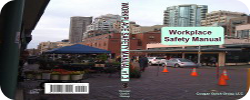There is cause to be concerned the EPA may be a bureaucracy out of control. They are relentless in pursuit of rules to control every aspect of commerce. The recent Renovation, Repair and Painting (RRP) Rule is one such example. However, the purpose of this article is to help you understand your business, perform it safely and stay out of physical and regulatory trouble, so we are not going to dwell deeply on the politics of EPA.
The companion rule to EPA’s RRP is the HUD Lead Safe Housing Rule. If you work on government subsidized housing, you need to be aware of both rules and be certified by both agencies.
According to the EPA, approximately 34 million pre-1978 housing units contain paint that meets the Federal definition of “lead-based paint” (LBP). The RRP Rule assumes any house built before 1978 contains LBP, unless the house has been tested and the results are negative. Components most likely to be coated with LBP include windows and doors, as well as exterior walls and porches.
Only certified renovators are allowed to work on pre-1978 homes. If you are a contractor caught working on a qualifying home without the proper certification, the penalty is huge. The EPA has the authority to seek civil fines of $32,500 per offense and an additional criminal fine of $25,000 plus jail time for knowing and willful violations of the RRP rule. I read somewhere in the literature that a small contractor working out of his truck, though ignorant of the rule, is still a “knowing and willful” violation. So beware.
For more information on RRP requirements and training, go to:
https://www.epa.gov/lead/pubs/renovation.htm
https://www.epa.gov/opptintr/lead/pubs/training.htm
https://www.epa.gov/fedrgstr/EPA-TOX/2008/April/Day-22/t8141.htm
In the training for RRP certification, you will be subjected to two tear-jerker videos: the first video is a former low-bid, poor work habits, painting contractor who infected his family with work-related lead contaminates; the second video is about the horrors a mother and daughter went through when the child was infected with lead during renovations to their home. The second video is more legitimate than the first because the first glorifies a former sloppy, low-bid contractor who is now cast as a professional after putting his family in jeopardy.
Even before EPA published their Renovate Right pamphlet over ten years ago, quality contractors knew enough about working around LBP to keep the dust down, keep the work area clean, vacuum their work clothes before leaving the job and upon arriving home to put their clothes directly in the laundry and take a shower. Granted, the EPA has improved upon these practices and there are better equipment and products on the market today to help eliminate the threat of lead contamination. Had the low-bid contractor just done these few sensible things, he would have never infected his family. However, horror stories are the foundation of empire building for bureaucracies – even if they are few and very far between.
The RRP was published 22 Apr 2008 under authority of Toxic Substance Control Act (TSCA) sec 402(c)(3). It affects work performed on all homes built before 1978 and took effective April 22, 2010. However, my sources tell me, because local bureaucracies were not prepared to deal with the information services required by the EPA, they extended the effective date six months. Which means the Rule takes effect, next week, Friday, 22 October.
The RRP requires all training providers must be accredited; all renovation contractors who work on homes built before 1978 must be certified; dust sampling technicians must be trained and certified; non-certified workers must work under and be trained on-the-job by a Certified Renovator; work practices must be followed for work covered by the rule; and renovators must educate owners and occupants.
Homeowners may choose to opt out of the RRP Rule requirements if they occupy the housing to be renovated; there are no children under 6 years of age residing in the home; there is no pregnant woman living in the house; no child under 6 years of age is regularly provided care in the house; and the homeowner signs a statement acknowledging that the renovation firm will not be required to follow the lead-safe work practices in the RRP Rule.
If you need more information about lead, you may download the rules and other information from the following websites:
www.epa.gov/lead
www.hud.gov/offices/lead
According to the EPA, federal standards define LBP as any paint or surface coatings that contain lead equal to or in excess of 1.0 milligram per square centimeter or more than 0.5 percent by weight. Children, especially children under age 6, are most at risk from small amounts of lead. During normal and frequent playing or hand-to-mouth activity, children may swallow or inhale dust from their hands, toys, food or other objects. In pregnant women, lead passed from the mother to the baby can cause miscarriages, premature births, brain damage and low birth rate. Adults can be affected with high blood pressure, fertility problems and sexual disorders, digestive problems, nerve disorders and muscle or joint pain and memory problems. We know lead is something to be concerned about. However, we also know lead is found naturally in some soils. So, the best advice is to work smart and not freak out.
If you are working on pre-1978 homes: learn the rules, obey the rules and stock up on visqueen.

